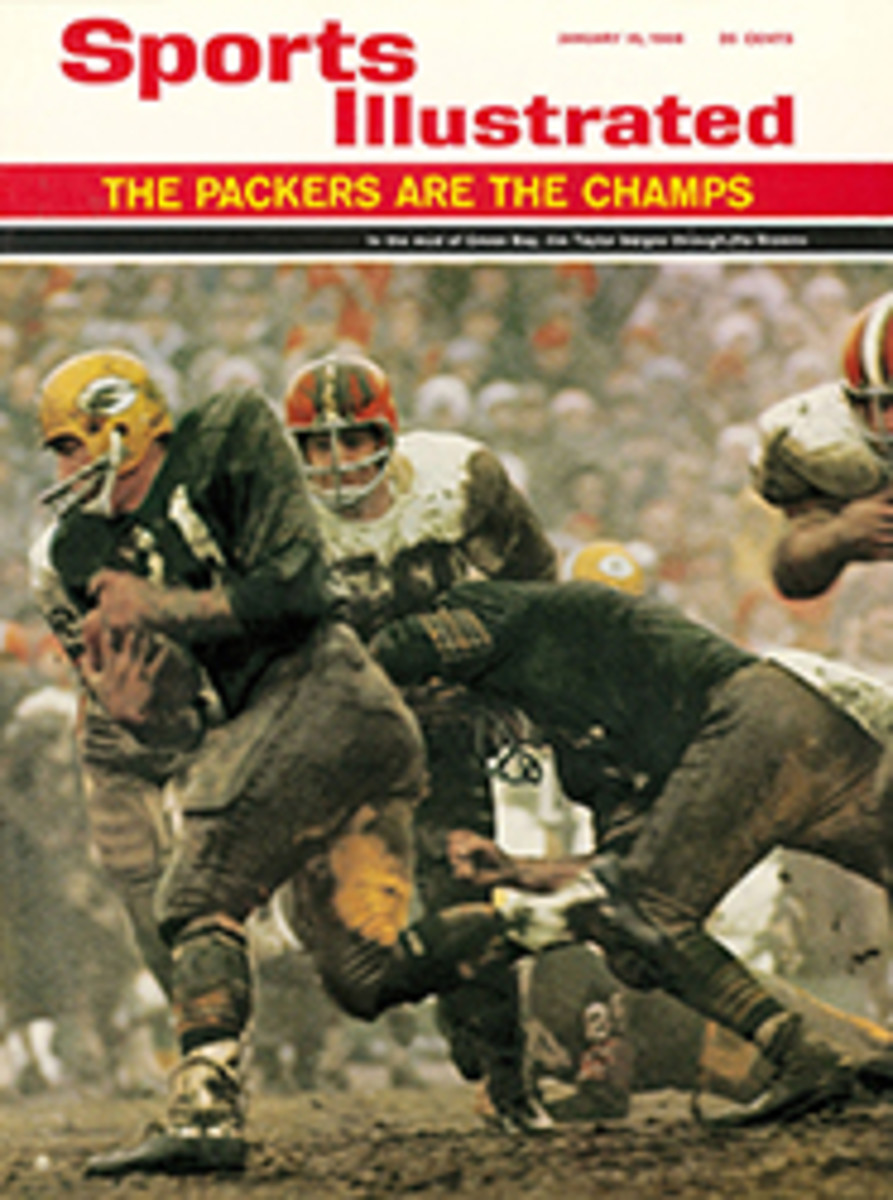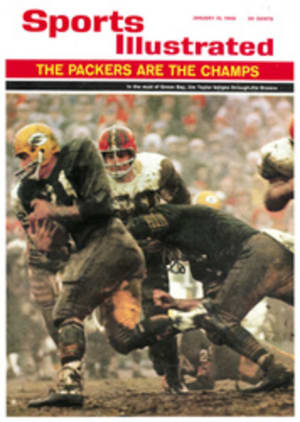
¬°Olé! Manolo—a little bit too late
You would have thought that Spain had just won the Davis Cup. As Manuel Santana of Madrid served an ace to Roy Emerson of Brisbane to win their four-set match, hundreds of hysterical Spaniards poured out of the stands and onto center court at White City Stadium in Sydney. A band broke into Hello, Dolly!, that old Iberian standard, and the uninhibited Spaniards did snake dances, waved scarves, banners and sombreros, hoisted small children to their shoulders and, of course, wept. So what if Spain had already been beaten by Australia after the first two days of cup play? This had been the big match—Santana against Emerson, the battle for the amateur championship of the world—and ¬°olé! Manolo had won!
It had been a long-awaited match. The toothy Santana, 27, had won the U.S. championship at Forest Hills last fall from a field that had included Emerson, but Emerson had been eliminated by Arthur Ashe in the quarter-finals. Emerson had won at Wimbledon in July (and just about everywhere else before that) but had not faced Santana, who did not play. When the two met at White City Stadium last week the stands were crowded. More than 400 Spaniards sat—or, rather, stood—whistling, shouting and waving red-and-gold banners. Most of them had come from various parts of Australia, but 80 had flown all the way from Spain.
The match, as it developed, was not the greatest of the century, or even of the Challenge Round. Emerson won the first set, but lost the next three, 6-2, 6-4, 15-13. Even in the final set, which looks close on paper, Emerson often was struggling to hold service, while Santana was rarely in trouble. So great was the demonstration following Santana's victory—he was carried off on the shoulders of his countrymen—that the hero was slightly bruised when he arrived in the dressing room. However, nothing could mar his elation. "At least I proved I was in very good shape today," he said, his big teeth showing in a wide smile.
Santana was referring to the accusations by Australian officials that the Spanish team had not taken the Challenge Round seriously, that they had turned the trip to Australia into a pleasure jaunt and were not in top condition. It is true that on the way to Australia the Spaniards had stopped off in Tahiti to sample the local sunshine, thereby missing a couple of important Australian tournaments, hurting the gate and angering officials. Moreover, when they did arrive in Australia, they refused to play the rest of the tournament schedule, preferring to work out with pros such as Lew Hoad and Ken Rosewall and some of the touring Americans, among them Ashe, Clark Graebner and Cliff Richey. But Spanish Cup Captain Jaime Bartroli defended his team's training methods, pointing out that his boys did calisthenics for half an hour every morning and practiced every afternoon. Whereupon he was told that the Australian players ran every morning, played in tournaments in the afternoon and often ran again in the evening.
Certainly conditioning seemed to play a major role in the grueling and decisive first match between Santana and Fred Stolle, the tall, good-natured Australian. To beat Australia, Spain needed two singles victories from Santana. Stolle, like Emerson, had been eminently beatable for the past six months, and in the first two sets against Santana, played in steaming heat, his form was unchanged. Then, down two sets to love, Stolle began serving well and he quickly evened the match. In the fifth set, games went to five-all. Santana seemed on top of his game, leading 30-love, when in a great burst of cross-court and down-the-line placements Stolle ripped off four points in a row, held serve and won the match Spain could not afford to lose.
After Stolle's gallant comeback Australia had no problems. Emerson beat Juan Gisbert to make it 2-0. Gisbert is a marvelous clay player and it was his victory over Dennis Ralston in Barcelona last August that led to Spain's victory over the U.S. But in Australia they play on grass, and grass reduces Gisbert's game to club level...well, almost.
The following day two young Australians, John Newcombe and Tony Roche, wrapped up the cup for Australia, beating Santana and Lis Arilla in 114° heat. It was enough to make the Spaniards wish they had never left Tahiti. Santana and Arilla managed to win the second set, but faded fast after that. Santana looked especially fatigued in the fourth and final set, losing his service three straight times. Fin, Espa√±a.
There was a strong feeling in Australian tennis circles preceding cup play that the home team was fortunate to be playing Spain and not the U.S. Led by Cup Captain George MacCall, the U.S. players—Ashe, Richey, Graebner, Herb FitzGibbon, Marty Riessen and Jim McManus—scored impressive victories in the major Australian tournaments.
All this has not been lost on Harry Hopman, Australia's Cup captain. "Ashe and Richey have been most impressive," Hopman said. "Graebner has shown amazing improvement and I see no reason why he won't continue to improve." The only development that could hurt, yea ruin, the U.S. prospects for the 1966 Davis Cup would be the drafting of Ashe into the Army, a distinct possibility.
Another reason for U.S. optimism is the fact that Roy Emerson clearly is no longer the giant he has been for the past few years. After his victory at Wimbledon, his second in a row, his game faltered. Playing on the U.S. grass circuit, he lost to players who in days past would not have taken a set from him. Insignificant tournaments, people decided. Wait till Forest Hills. When Ashe beat him there, it was only partly because the American played well. Emerson looked unsure, especially on serve. Harry Hopman himself brushed off Emerson's recent losses to Ashe and Graebner in Australia, saying that Emmo was merely working to a peak for the Challenge Round. That Santana, after nine tough sets in two days, could beat Emerson, who had played only three easy sets followed by a day of rest, shows that Emerson has lost a good deal.
After the Santana match, Emerson sat slumped in a cane chair for half an hour before trudging into a shower, where he stared silently at the floor as the water tumbled over him. His loss to Santana was his first in eight Challenge Round singles matches and he seemed to be taking it hard. Still, he answered the questions of newsmen politely, for Emerson, above all else, is a gentleman.
"At 30 I'm losing my keenness," he said. "I think it's about time I stepped down and let some of the younger players take over, I doubt if I'll play in the Challenge Round again. Manuel has put the handwriting on the wall for me."
Then, straightening his tie, Emerson said, "If there's nothing else, fellas, I think I'll go and have a beer." A slight grin broke out on his face. "Come to think of it, I might have two."
PHOTO
COLORFUL SPANIARDS showed up in fine voice, carrying banners and wineskins.

